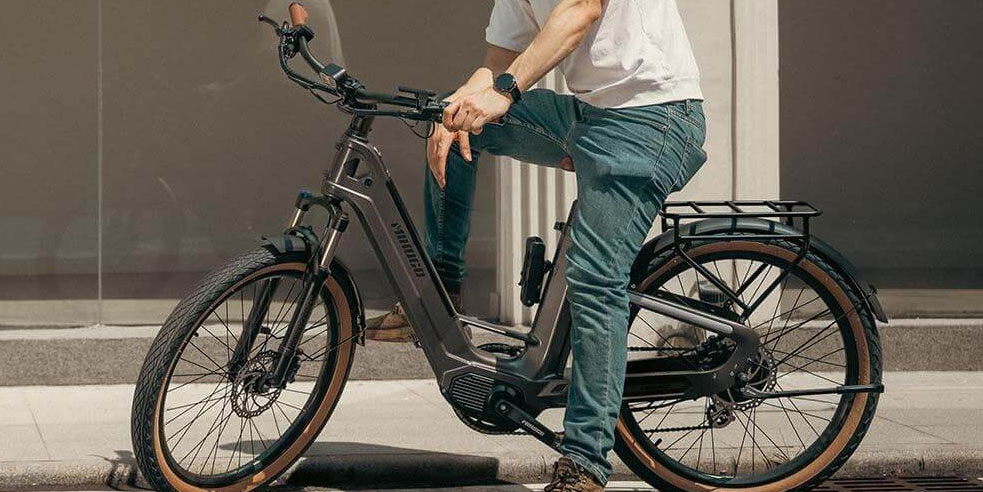
Electric bicycles have revolutionized cycling by making previously challenging terrains accessible to riders of all fitness levels. One of the most common questions potential e-bike owners ask is whether these electric-powered machines can handle steep inclines effectively. The answer is definitively yes, but the performance depends on several critical factors that determine how well your e-bike will conquer hills.
Motor Power and Torque: The Foundation of Hill Climbing
The ability of an e-bike to climb hills depends primarily on motor specifications, particularly torque output measured in Newton-meters (Nm). Most entry-level e-bikes produce 40-50 Nm of torque, which handles moderate inclines up to 10% grade comfortably. Mid-range models typically offer 60-80 Nm, tackling steeper hills with confidence. Premium e-bikes, including the best carbon fiber electric bike models, often deliver 85+ Nm of torque, enabling effortless climbing on grades exceeding 15%.
Motor placement significantly affects hill climbing performance. Mid-drive motors, positioned at the bike’s bottom bracket, provide superior climbing capability because they leverage the bike’s gear system. This configuration allows the motor to operate at optimal efficiency across various inclines. Hub motors, while simpler and more affordable, deliver consistent power but cannot benefit from gear multiplication during climbs.
Gear Systems and Climbing Efficiency
The transmission system plays a crucial role in hill climbing success. E-bikes equipped with internal gear hubs or derailleur systems allow riders to optimize both human pedaling effort and motor assistance. Lower gears reduce the load on the motor while maintaining forward momentum, extending battery life during extended climbs.
Many urban electric bicycles feature automatic or semi-automatic shifting systems that adjust gear ratios based on terrain and pedaling cadence. These intelligent systems ensure optimal power delivery during climbs without requiring manual intervention from the rider.
Battery Capacity and Range on Hills
Hill climbing significantly impacts battery consumption, often doubling or tripling power draw compared to flat terrain riding. A 500Wh battery that provides 60 miles of range on level ground might deliver only 20-25 miles in mountainous terrain. Understanding this relationship helps riders plan routes and manage battery usage effectively.
Temperature affects battery performance during climbs. Cold weather reduces battery capacity by up to 20%, while the additional heat generated during intensive climbing can trigger thermal protection systems that temporarily reduce power output. Plan accordingly for seasonal variations in climbing performance.
Weight Distribution and Climbing Dynamics
Total system weight directly impacts climbing performance. Every additional pound requires more energy to lift against gravity. E-bikes typically weigh 45-70 pounds, significantly more than traditional bicycles. However, the motor assistance more than compensates for this weight penalty on inclines.
Rider position and weight distribution affect traction and climbing efficiency. Leaning forward shifts weight over the front wheel, improving steering control on steep climbs. Conversely, excessive forward weight transfer can cause rear wheel slip on loose surfaces.
Gradient Limitations and Real-World Performance
Most quality e-bikes handle gradients up to 20% (approximately 1-in-5 slope) with moderate pedaling assistance from the rider. Steeper inclines require more aggressive pedaling input and may push the motor to its thermal limits during extended climbs. Grades exceeding 25% typically require specialized mountain e-bikes with powerful motors and appropriate gearing.
Sustained climbing differs significantly from short, steep pitches. A 2-mile climb at 8% grade challenges the motor’s thermal management system more than a 200-yard climb at 15% grade. Motor overheating protection systems may reduce power output during extended climbs to prevent damage.
Climbing Techniques and Best Practices
Effective hill climbing combines proper technique with strategic power management. Start climbs with adequate battery charge – at least 40% for significant elevation gains. Use lower assist levels initially, increasing power only when necessary to maintain momentum.
Maintain steady pedaling cadence between 70-90 RPM during climbs. This optimal range keeps the motor operating efficiently while providing consistent power delivery. Avoid sudden acceleration or aggressive throttle inputs that drain battery capacity rapidly.
Select appropriate gear ratios before reaching steep sections. Shifting under load stresses the drivetrain and may cause chain slippage or derailleur damage. Anticipate terrain changes and adjust gearing proactively.
Maintenance Considerations for Hill Climbing
Regular maintenance becomes critical for e-bikes frequently used in hilly terrain. Chain and drivetrain components experience accelerated wear due to increased torque loads during climbing. Brake systems require more frequent inspection and pad replacement due to extended descents following climbs.
Motor cooling systems need regular cleaning to prevent overheating during sustained climbs. Ensure air vents remain clear of debris and consider motor temperature monitoring during extended hill climbing sessions.
Conclusion
E-bikes excel at hill climbing when properly equipped and operated within their design parameters. Understanding motor specifications, battery management, and climbing techniques ensures successful navigation of challenging terrain while maximizing component lifespan and riding enjoyment.
The post Can E-Bikes Go Uphill? The Complete Guide to E-Bike Hill Climbing Performance appeared first on PezCycling News.




